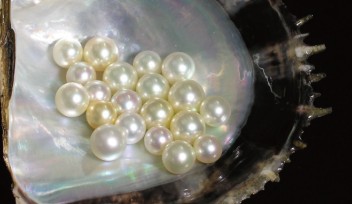Delving into Ocean Circulation Pattern in Okinawa Trough
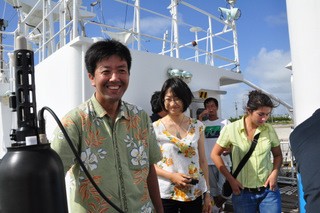
(From left) Dr. Mitarai, Dr. Nakamura and Ms. Vincent aboard the Tonan Maru docked at Itoman Port |
By Kaoru Natori
The beauty and scenery of Okinawa’s clear underwater world has attracted divers from around the world. Close-up and unique encounters with marine animals fascinates many, often alluring them to explore deeper into the sea.
Dr. Satoshi Mitarai and Dr. Masako Nakamura of the Marine Biophysics Unit at OIST are interested in studying complex ecosystems of exotic organisms living close to deep-sea plumbing systems called hydrothermal vents, which ventilate heat and minerals from the interior of the Earth. These organisms living in hydrothermal vent communities do not move from one place to another when they are adults, but their larvae do, with the help of oceanic turbulence. The dispersal of larvae affects the distribution of the species that inhabit the areas close to the vents, as well as the degree of genetic differentiation of those species.
On July 8, Dr. Mitarai, Dr. Nakamura, and Ms. Flora Vincent, a short-term student research assistant for Dr. Mitarai, visited the Tonan Maru, a 176-ton scientific research ship owned by the Okinawa Prefectural Fisheries and Ocean Research Center in Itoman City. The purpose of their visit was to deliver a German-made marine observation instrument called NEMO Float to crew members before they departed for a research voyage to waters off Okinawa’s west coast, and entrust them with the task of dropping it into the sea.
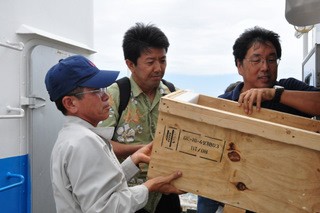
|
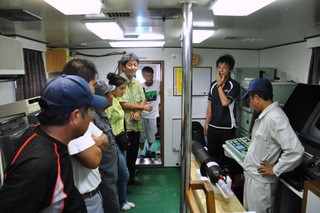
|
Once dropped into the ocean, the float ascends from a depth of up to 1000 meters at two-week intervals. By pumping fluid into an external bladder, the battery-powered autonomous instrument rises to the ocean surface and transmits data, including its position, temperature and salinity profiles, to the Iridium satellite system. When the transmission is complete, the bladder then deflates and the float returns to its original density and sinks to drift until the cycle is repeated. The float is capable of making such cycles for observation over a period of approximately five years. In this way, the researchers can estimate ocean circulation patterns around hydrothermal vents.
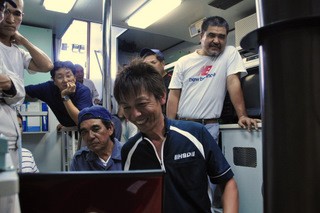

In this joint research project with their collaborators at the Japan Agency for Marine-Earth Science and Technology (JAMSTEC), Dr. Mitarai and Dr. Nakamura aim to study the mechanisms of dispersal of vents species in the Okinawa Trough in the East China Sea. Combined with modeled ocean currents, the researchers will track down how far larvae travel over a certain period of time, in order to create a novel tool to assess population connectivity as well as a predictive tool to address management scenarios for Okinawa.
Dr. Nakamura said, “Once we know the habitats and population density of different species, this knowledge could contribute to designating marine protected areas in the Okinawa Trough. This knowledge could also help to conduct a deep-sea exploration activity, such as gas or oil well drilling and rare metal mining, with minimum disruption of ecosystem.”
Dr. Mitarai concurred her view. “An exciting research has just begun. We plan to drop many floats into the ocean over the next few years, and build an extensive map of deep-sea community structure in the Okinawa Trough.”
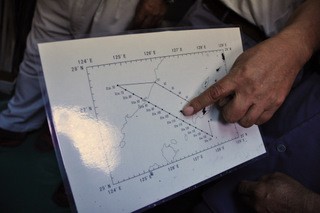
Dr. Mitarai points where the float will be released into the ocean off Okinawa's west coast.
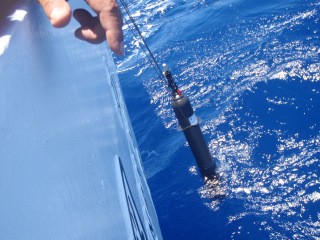
On July 12, the float was dropped into the ocean off Kume Island and its first successful data transmission was confirmed on July 22. (Photo by the Tonan Maru)











